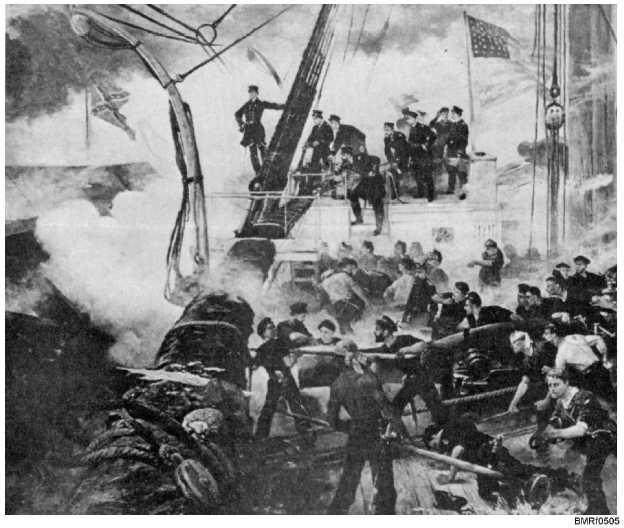Newark, a 4,098-ton protected cruiser, was the last of
the Navy’s warships to be fitted with sails. It was
launched in 1890 and commissioned the following year.
Because of its many improvements, the USS Newark
has been labeled as the first modern cruiser in the U.S.
Fleet.
With the development of the self-propelled torpedo,
long-range torpedo boats made their debut. In 1890, one
of the first torpedo boats joined the fleet—the 22.5-knot
USS Cushing. The Navy acquired 16 fast torpedo boats
and three 185-ton boats capable of speeds of 27 knots.
The development of torpedo boats caused the shape
of ships to change. An example was the USS Truxtun,
which led to the design of our present-day destroyers.
These ships were designed to combat torpedo boats.
Later improvements resulted in destroyers themselves
carrying torpedoes.
Subsurface Ships
Since surface ships were driven by steam, why not
submarines? Steam requires air, fire, and heat, and those
were in limited supply aboard a submarine. During the
19th century, the internal combustion engine was
developed. Use of this engine on ships had drawbacks.
However, many of its problems were overcome by two
inventors—John Holland and Simon Lake. Holland and
Lake had opposite theories about the submarine.
5-12
Figure 5-5.—Farragut (in rigging) at Mobile Bay.
Student Notes:


